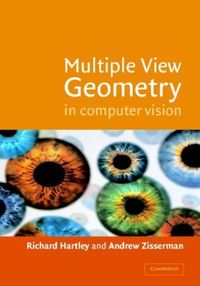
Multiple View Geometry in Computer Vision
A basic problem in computer vision is to understand the structure of a real world scene given several images of it. Techniques used in the book for solving this are taken from projective geometry and photogrammetry. The authors cover the geometric principles and their algebraic representation in terms of camera projection matrices, the fundamental matrix and the trifocal tensor. The theory and methods of computation of these entities are discussed with real examples, as is their use in the reconstruction of scenes from multiple images. Recent major developments in the theory and practice of scene reconstruction are described in detail in a unified framework. The authors provide comprehensive background material, so a reader familiar with linear algebra and basic numerical methods will be able to understand the projective geometry and estimation algorithms presented, and implement the algorithms directly from the book.
Utgiven: 2000
ISBN: 9780521623049
Förlag: Cambridge University Press
Format: Inbunden
Språk: Engelska
Sidor: 624 st
A basic problem in computer vision is to understand the structure of a real world scene given several images of it. Techniques used in the book for solving this are taken from projective geometry and photogrammetry. The authors cover the geometric principles and their algebraic representation in terms of camera projection matrices, the fundamental matrix and the trifocal tensor. The theory and methods of computation of these entities are discussed with real examples, as is their use in the reconstruction of scenes from multiple images. Recent major developments in the theory and practice of scene reconstruction are described in detail in a unified framework. The authors provide comprehensive background material, so a reader familiar with linear algebra and basic numerical methods will be able to understand the projective geometry and estimation algorithms presented, and implement the algorithms directly from the book.
Begagnad bok (0 st)
Varje vecka tillkommer tusentals nya säljare. Bevaka boken så får du meddelande när den finns tillgänglig igen.



